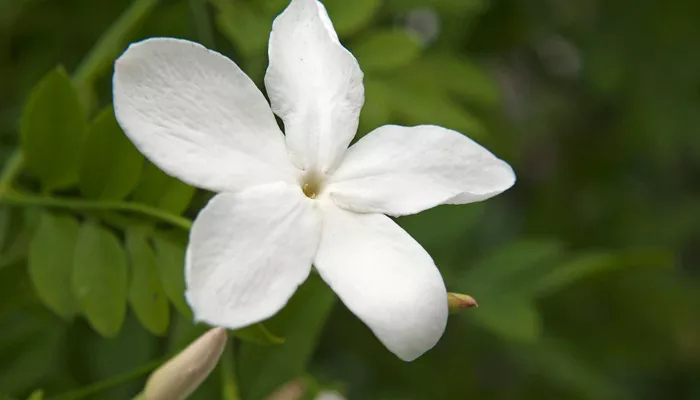Jasmine, known for its delicate fragrance and beautiful white flowers, is a beloved plant in gardens around the world. This aromatic flower has captured the admiration of many cultures, including China, where it holds significant cultural and historical value. This article delves into the Chinese name for jasmine, exploring its cultural significance, linguistic nuances, and the role of jasmine in Chinese tradition.
Introduction to Jasmine
Jasmine belongs to the Oleaceae family, which includes other aromatic plants like olive and lilac. The plant is renowned for its small, fragrant flowers, which can be white, yellow, or pink, depending on the variety. Jasmine is widely cultivated for its use in perfumes, teas, and traditional medicine.
In different cultures, jasmine represents various themes such as purity, love, and beauty. Its scent is often associated with romantic and spiritual connotations. In China, jasmine is not just a floral delight but also a symbol embedded in cultural practices and traditional celebrations.
The Chinese Name for Jasmine
Chinese Character and Pronunciation
In Mandarin Chinese, jasmine is called “茉莉” (mòlì). The term “茉莉” is composed of two characters:
茉 (mò): This character refers to jasmine itself. It does not have a direct standalone meaning but is essential in the context of the plant’s name.
莉 (lì): This character is used in the names of various flowers and conveys the concept of fragrance.
Etymology and Linguistic Details
The characters “茉” and “莉” are derived from the botanical Latin name Jasminum, which is rooted in the Persian word “yasmin.” Over time, as jasmine spread from Persia to China, the name evolved phonetically into “茉莉.”
Cultural Significance
In Chinese culture, jasmine is revered not only for its pleasing aroma but also for its symbolic meaning. It represents purity, grace, and elegance. The flower is often associated with the virtue of gentle beauty and is used in various traditional practices and ceremonies.
Jasmine in Chinese History and Tradition
Historical Context
Jasmine was introduced to China during the Tang Dynasty (618–907 AD) and quickly became popular due to its exquisite fragrance. It was often grown in imperial gardens and used in the creation of scented sachets and teas.
Jasmine Tea
One of the most well-known uses of jasmine in China is jasmine tea. This tea is made by infusing green tea leaves with jasmine blossoms, allowing the flavor and scent to meld. Jasmine tea has been enjoyed for centuries and is appreciated for its calming properties and delicate taste.
Festivals and Traditions
Jasmine also plays a role in various Chinese festivals and celebrations. For example, during the Lantern Festival, jasmine flowers are often used in decorations and as part of traditional offerings. The flowers symbolize good luck and are believed to bring harmony and happiness.
Symbolism and Modern Usage
Symbolic Meanings
In contemporary Chinese culture, jasmine continues to symbolize purity and grace. It is often used in literature and art to evoke feelings of elegance and delicate beauty. The flower is also associated with new beginnings and fresh starts, making it a popular choice for weddings and other significant life events.
Modern Applications
Today, jasmine remains a popular choice for perfumes and beauty products. Its scent is widely appreciated in the cosmetics industry, and jasmine extracts are used in a variety of skincare and fragrance products.
Jasmine Varieties in China
China is home to several varieties of jasmine, each with unique characteristics. The most common varieties include:
Arabian Jasmine (Jasminum sambac): Known for its sweet fragrance and small, white flowers. It is often used in traditional Chinese medicine and in the production of jasmine tea.
Common Jasmine (Jasminum officinale): This variety is appreciated for its climbing habit and fragrant white or pink flowers. It is frequently used in garden landscapes and for decorative purposes.
Winter Jasmine (Jasminum nudiflorum): Recognized for its bright yellow flowers that bloom in winter, this variety is valued for adding color to gardens during the colder months.
see also: Does Jasmine Attract Love?
Conclusion
Jasmine, or “茉莉” (mòlì) in Chinese, is a flower that holds deep cultural significance and historical value in China. Its delicate fragrance and symbolic meanings make it a cherished plant in both traditional and modern contexts. From its role in traditional Chinese tea ceremonies to its presence in contemporary beauty products, jasmine continues to enchant and inspire people around the world.
Understanding the Chinese name for jasmine provides insight into the flower’s importance in Chinese culture and highlights the rich history and symbolism associated with this beloved plant. Whether enjoyed as part of a fragrant tea or admired in a garden, jasmine remains a timeless symbol of purity, elegance, and grace.
In summary, the Chinese name for jasmine, “茉莉” (mòlì), reflects the flower’s cherished status and its enduring presence in Chinese culture. Its history, symbolism, and modern applications underscore the timeless appeal of this exquisite flower.


